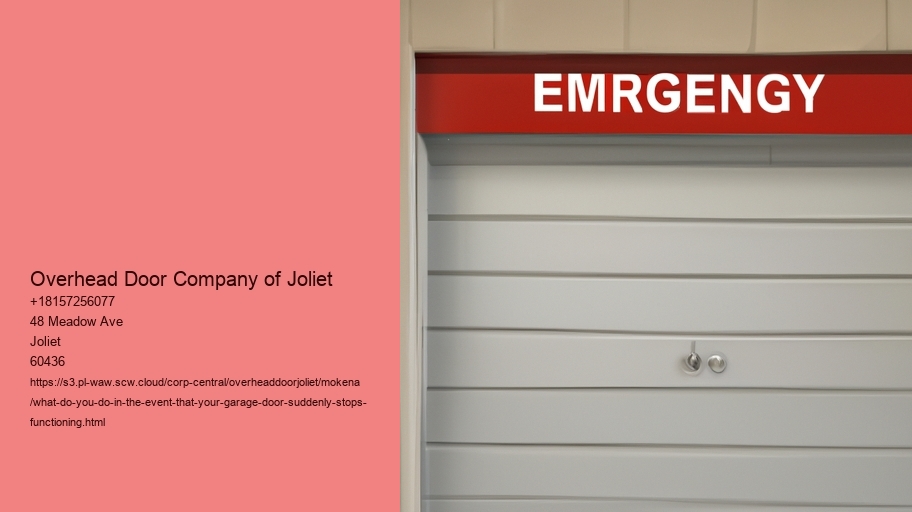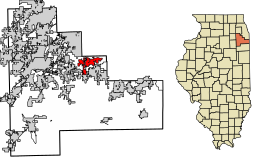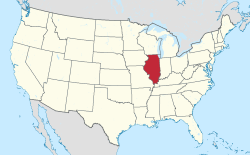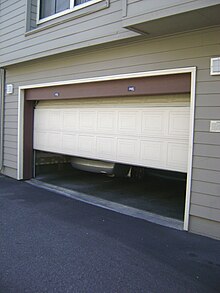What kind of garage door Opener and Door Do You Have? .
It is important to know the garage opener and door you have before you can begin troubleshooting.
Roll-up garage doors, which are frequently used in commercial areas, are made from slats that are then rolled up into coils.
Doors that tilt up, on the other hand they are a solid piece that tilts in and up when it opens.Importantly, you must identify the type of garage door opener.The three main types are chain-drive, belt-drive, and screw-drive openers.Chain-drive openers, which use the use of a chain made of steel to lift and lower the door, are long-lasting and affordable but they are noisy.Belt-drive openers operate similarly but they utilize a rubber belt, making them quieter and a great choice for attached garages.Screw-drive openers move the door using a threaded rod of steel and offer a good balance of sound and cost.
The next step is checking your garage door opener, and identify the model. Verify the breaker and plug to confirm that the opener is operating. Check the release cord for manual operation to be sure that it's not pulled. This will cause the door to become disconnected from the opener. Inspect the rollers and tracks of the door to determine if there are any damage or obstructions, and then remove any obstructions.
If you need to, grease the moving components. Insufficient lubrication could cause them to jam or stick.Resetting your opener will resolve any electronic faults. Refer to the instruction manual of the model you have to know the specific instructions. Certain openers can be reset by pressing an icon, while other require that the unit be disconnected and after that, it must be re-plugged.
The tension on springs can be high, and it can be hazardous to repair them if you don't have the proper tools.
If your garage door suddenly stops functioning, you should consult with an expert.
Look for any obstructions or debris.
When the garage door abruptly stops working, it's both perplexing and frustrating particularly if it's regular part of your life.
One of the basic and most effective steps to do when confronted in this scenario is to search for obstructions or debris.This simple, yet powerful action can be a key to identifying the issue and returning functionality to the garage door.Garage doors operate on a system that includes rollers, tracks and other moving parts that have to be free of obstacles to work smoothly.Over time dirt, leaves small stones, or other debris can build up along the tracks or get trapped in the rollers.Even an obstruction of a tiny size can hinder the door from opening or closing properly.Therefore an inspection thorough of these parts should be your first step.
Begin by examining the tracks, both on the left and right side of the door. Look for obvious obstructions, or even debris accumulation. If you spot something odd, such as a twig, or a rock stuck within the track. Remove it with care.
Sometimes, the issue might not be apparent immediately, so it's advisable to run your hands along the track to feel for any unnoticed obstacles.Ensure that the tracks are aligned correctly as well, as an incorrect alignment can result in the door becoming jammed.Then, check the rollers and hinges. The parts must be able to move without a thump. If they're stuck or sticky, this could be due to rust or dirt. Cleaning and lubricating these components will generally solve the issue.
Be sure to inspect the area surrounding the door. Sometimes, objects within the garage might be moved or fall, thereby blocking its path. Check that the garage is free of obstructions, and that there are none of the objects that could block the door.
What do you do in the event that your garage door suddenly stops functioning? - motor car
- Sears
- marriage
- Homer Glen
Verify the sensors if the door is not opening after you have cleared any obstructions.
Modern garage doors are fitted with safety sensors to prevent doors from closing in case something happens to be detected in its path.Make sure these sensors are cleaned and properly aligned, as any dirt or misalignment may cause them to malfunction.By ensuring a clear path and avoiding obstructions, you can stay clear of having to call a professional solve a problem which is often simple.
Make sure you check the wall switch and remote control
It's essential to inspect the wall switch and remote control.
What do you do in the event that your garage door suddenly stops functioning? - Saint Xavier University
- motor car
- Saint Xavier University
- Amos Alonzo Stagg
First, consider the remote control.This handheld device is your primary tool for operating the garage door without direct physical interaction.Over time, remote controls can experience issues such as drained batteries, signal interference, or even internal damage.Start by replacing the batteries with new ones.It might seem simple, but dead batteries are a common reason for a garage door not responding.If the problem persists after replacing the batteries, try reprogramming the remote according to the manufacturer's instructions.Additionally, ensure that the remote is within the recommended range and that there are no obstructions blocking the signal.
The wall switch is an important component of the garage door's system.
If you are comfortable and comfortable, you can open the switch to inspect whether the wires are damaged or disconnected.In certain instances, the wall switch may appear to be in working order however the door is unresponsive.This could suggest an issue with the garage door opener unit itself or other components such as the sensors or the door tracks.However beginning by utilizing the wall switch and remote control would be a sensible first step.
It helps you identify these common problems before you move on to more complicated troubleshooting strategies.In the end, examining the wall switch and the remote control whenever your garage door suddenly stops operating is a straightforward and efficient approach.By inspecting these parts first, you will be able to quickly determine whether the problem lies within these components or if additional investigation is needed.This initial examination not only saves time but also gives you peace of mind knowing that you've completed the necessary steps to diagnose the problem correctly.
Manually test the door's balance
It can be a hassle and inconvenient when the garage door ceases functioning. Garage doors are a vital part of your house, as it offers security, protection against the elements, and an easy access to your vehicle and storage space.
One critical step you should take when faced with the problem of a garage door that is not working is to test manually the door's balance.This simple but effective method can help diagnose potential issues and stop further damage from occurring to the door or its parts.Balance of the garage door is vital to its safe operation. A door that isn't balanced could create more serious issues which include misalignment and broken springs.
Start by disengaging the garage door opener.
The majority of garage doors come with the release mechanism, which is usually an orange cord or handle that allows you to disengage the door from the motor.Once the door is unlocked from the motor, gently lift it to about waist height, and then release it.A well-balanced door will stay in place or move slowly.If the door falls rapidly or shoots upwards, it indicates an imbalance.It is recommended that you contact an expert to assist you adjust the springs in order to ensure that the garage door is balanced. This won't only solve the problem, but also increase the lifespan and reliability of the system.
Manually testing the balance of the garage door is an important first step to take when it suddenly stops working.
This method helps identify the cause of the issue. It can be traced to the door's balance, or in another place in the system.By understanding the importance of door balance and fixing any issues as quickly as possible you will be able to avoid any damage to your garage door and ensure that the garage door operates without issue and in safety for years to be.Check the tracks and rollers.
This easy check can reduce your expenses and save you time when your garage door is not working.
Tracks and rollers are essential elements of the garage door's operation system.The tracks are the steel rails that control the door as it opens and closes. The rollers are tiny wheels that travel along the tracks.
Over time, these parts can become dirty, misaligned, or damaged, resulting in operational issues.Begin by examining the tracks for any obstructions.Dust, grime, and even tiny debris may accumulate within the tracks, causing the rollers to struggle when they travel across the path.Cleaning the tracks using an damp cloth will often resolve these issues.Make sure you dry them well afterward to stop rust from forming.
The next thing to do is checking the alignment of the track. Tracks should be straight and parallel.
What do you do in the event that your garage door suddenly stops functioning? - Saint Xavier University
- race and ethnicity in the United States Census
- settler
- middle school
The wear and tear of rollers can occur in time. This is especially the case if they're made of plastic.
Metal rollers that have bearings are more durable, and provide better performance.Applying silicone-based lubricants can reduce wear and friction. Make sure to lubricate the springs and hinges to ensure your garage door works efficiently.
If you ensure that these parts are in good alignment and properly lubricated it is possible to make sure that the garage door is restored to fully functioning.
It is important to inspect and maintain these parts can also prevent any future issues, extending the life of the garage door system.Examine for obvious damage or wear
It's frustrating and a hassle when the garage door stops working suddenly, especially if you're on your way home, or trying to lock your home for the night.
Garage doors are a complex system that include springs, rollers cables, tracks, and various other parts. Over time, the components of this system will get worn out from daily use and the exposure.
When you conduct a thorough exam, you can spot any obvious signs of damage cause for the door to fail.Begin your inspection by examining the springs. They are the ones responsible for raising and lower the door. Examine for evidence of wear or rust. A worn or damaged out spring could render the door inoperable, therefore it's crucial to repair this issue immediately. Next, check the cables for signs of fraying or broken wires.
Another important area to pay attention to is the door itself.Look for damage, bends, or warpings that could affect its balance and alignment.Pay particular attention to the weather stripping on the top of the door as a damaged strip can hinder the door from sealing correctly.
Make sure that the sensors at the door are also clean and in alignment. Dirt or misalignment may cause them to fail and stop functioning.An inspection of the visuals is helpful however, you must keep in mind that not all problems are immediately obvious. If you don't find any obvious evidence of damage or wear, you may need to consult with a specialist to pinpoint the problem.
This will not just aid in identifying the problem more quickly, but it will allow you to take actions to restore the functionality of your garage door.
You can extend the life of your garage door by being proactive.Check for Springs and Cables
It's frustrating when your garage door ceases working. You must check the springs and cables. These parts are essential for the functioning of your garage, and they are the primary cause for malfunctioning garage doors.
Springs play a crucial function in the operation of the garage door through neutralizing the door's weight.When the door is in motion the springs carry the majority of the weight which allows the door to shut and open smoothly.There generally are two kinds of springs: torsion springs as well as extension springs.Torsion springs are mounted above the garage door and twist to store energy, whereas extension springs can be found on both sides of the door and extend to allow the required force.
The springs could become worn-out over time, break or lose tension, which can cause operational problems.Similarly, cables are essential as they work in tandem with the springs to lift and lower the door.They are usually made from steel and designed to withstand high tension.However they may suffer from wear and tear, deterioration, or snap because of the immense pressure they are under.A broken cable could cause the door to become unbalanced or even completely inoperative.
If you are unsure whether the cables or springs need to be adjusted or not, visually inspect them. Look for evidence of wear or corrosion.
It's essential to consider security when working with garage door components.
The springs and cables are stretched and may cause serious injuries. If you do not have any experience with garage repair, it's best to call an expert. They'll have the equipment and know-how required to safely fix or replace these parts. This ensures that your garage door operates correctly and safely.In conclusion, when your garage door suddenly stops working, assessing the springs and cables is a key step in diagnosing the problem.Understanding their role and potential issues can help you determine whether a simple adjustment is needed or if professional intervention is required.Taking prompt action not only restores functionality but also ensures the safety and longevity of your garage door system.
Think about calling a professional technician
Your garage door can suddenly stop functioning and cause you to lose your time. It could even put your home at risk.
It may be tempting to grab the toolbox and try to fix on your own, but it is best to seek out an expert. This choice won't only ensure your safety, but also provide a lasting and more effective solution.Garage doors are complex systems composed of various components such as springs, cables, tracks, and electronic parts.Each of these elements plays a crucial role in the door's operation, and a malfunction in any part can cause the entire system to fail.Without proper knowledge and experience, attempting to fix these issues can be dangerous.For instance, garage door springs are under high tension and can cause severe injury if handled improperly.Professional technicians are trained to deal with these risks safely, using the right tools and techniques to handle repairs.
A skilled technician can also bring a level of knowledge and experience which a layperson doesn't have.
They can quickly diagnose the issue and identify whether it's a minor problem, like a misaligned track, or something more serious, like a broken spring.This expertise not only saves you time but also prevents the potential for further damage that can occur with incorrect handling.Professionals also have access to high-quality parts and can ensure that replacements match the specifications of your existing garage door system, leading to better functionality and longevity.In addition employing a professional may be more cost-effective in the long run.While DIY is a good option, while a DIY strategy may appear less costly initially, the risk of mistakes is high. This can result in expensive and more costly repairs in the future.A professional technician will complete the task correctly the first time and reduce the chance of having to deal with issues that arise repeatedly.
Most technicians offer warranties for their work. This provides confidence that when something goes wrong, your problem is protected.Engaging a professional in the process will help you save time and money. In trying to comprehend the workings of garage doors, acquire the correct equipment and carry out repairs could take hours or days. A technician can resolve the issue quickly and let you return to normal activities.
The desire to repair the garage door on your own is very strong. However, calling an expert is the most reliable option, the most secure and efficient option. Their knowledge as well as access to top quality parts for replacement and their ability to carry out quick and precise repairs will ensure that your garage runs smoothly and protecting your home.


















